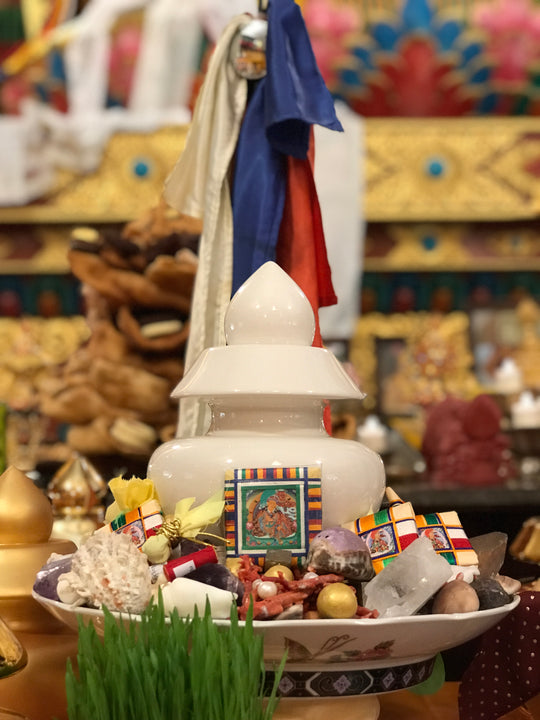The Power of "Om Ami Dewa Hrih"
The mantra "Om Ami Dewa Hrih" holds significant importance in Buddhist practice, particularly within traditions honoring Amitabha Buddha.
It is believed that reciting this sacred phrase purifies negative emotions, fosters compassion, and strengthens the potential for rebirth in Amitabha's Pure Land, a realm of ultimate peace and bliss.
Essentially, this practice serves as a conduit to connect with Amitabha Buddha's benevolent energy and cultivate positive mental states through the repetition of these potent syllables.
By reciting this mantra—Om Ami Dewa Hrih, the 6 afflictive emotions are purified, and the qualities of the 6 Paramitas are accomplished.
We increase our love and compassion and thereby destroy self-grasping. If the mind is not distracted, you will see the nature of the mind.
Understanding the Mantra's Components:*Om: Represents the universal sound, symbolizing ultimate reality and the interconnectedness of all things.
*Ami: Denotes Amitabha, the Buddha of Infinite Light and Compassion.
*Dewa: Signifies divine or heavenly qualities, reflecting Amitabha's enlightened nature.
*Hrih: Is considered a "seed syllable," encapsulating the essence of compassion and wisdom.
Benefits of Recitation:* Mental Purification: The mantra is believed to cleanse the mind of negative thoughts and emotions, promoting inner peace, clarity, and emotional equilibrium.
* Cultivation of Compassion: By focusing on Amitabha's boundless compassion, practitioners aim to develop a greater sense of empathy and kindness towards all beings.
* Aspiration for Rebirth in Pure Land: Consistent and sincere recitation of this mantra is thought to increase the likelihood of being reborn in Amitabha's Pure Land, a realm free from suffering and conducive to enlightenment.
In Summary:The recitation of "Om Ami Dewa Hrih" is a powerful practice for those seeking to cultivate inner peace, compassion, and a connection to Amitabha Buddha.
Through understanding the meaning of its syllables and engaging in regular recitation, practitioners can experience the transformative benefits of this sacred mantra.


















































